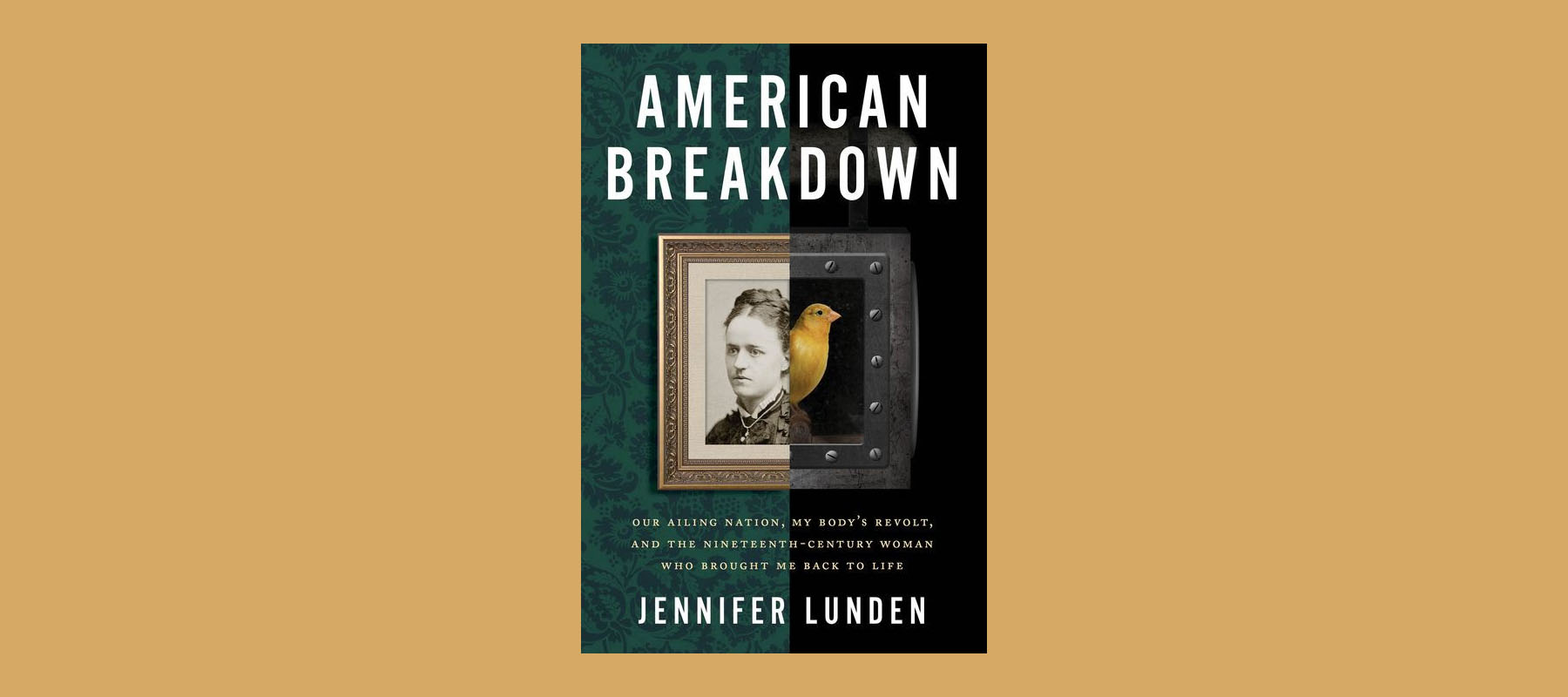
When I travel, even when I’m feeling great, I pack a cane and a mask. Because even with the dozen or so different prescriptions medications and supplements I take, I’m always only one minor injury or mild infection away from a debilitating flare. So, as a writer working on my own memoir, I eagerly dove into American Breakdown by Jennifer Lunden, a rich memoir by an eloquent writer, echoing my own experience and offering some hard-hitting research about what might underlie chronic fatigue and other long-term illnesses marked by pain.
Buy on Amazon ~ Buy on Bookshop.org
I was not prepared for this.
Lunden’s account of living with ME/CFS, chasing down therapies through the labyrinthine American health care system, digging into the shocking ways our system has permitted our lives to be pervaded by chemical toxins at every level while denying us the care we need, is a sobering eye-opener.
I think my favorite revelation comes from Lunden’s research and analysis of “The Yellow Wallpaper” by Charlotte Perkins Gilman and arsenic poisoning arising from the dyes used in popular William Morris wallpapers during the industrial revolution. The standard literary reading of Gilman’s story has its protagonist going mad due to isolation, with the yellow wallpaper a metaphor for the patriarchy that stands between her and freedom. After studying the evidence that Lunden presents of widespread arsenic poisoning that can be traced to the dyes in the era’s wallpaper, though, I’m inclined to agree with Gilman’s protagonist that, the stifling trap of her marriage aside, “perhaps it is the paper!”
Along the way, Lunden describes the life of Alice James, the bright, spirited sister of American author Henry James, who famously survived to her forties with crippling chronic illness that doctors could neither explain nor cure, and who inspired Lunden to persist in defining and healing from her own illness.
Perhaps the most wrenching twist in Lunden’s story is the epilogue. After over thirty years (and three hundred pages) spent getting her illness under control, she inevitably relapses. But this is a book about life with chronic illness, not a fairy tale in which evil is vanquished ever after. Our symptoms are a part of our lives, and they are trying to tell us something. Jennifer Lunden is still here for us, helping to find out what it is.
I’ll use this as a resource for years to come. And I’ll keep packing my cane.

You must be logged in to post a comment.